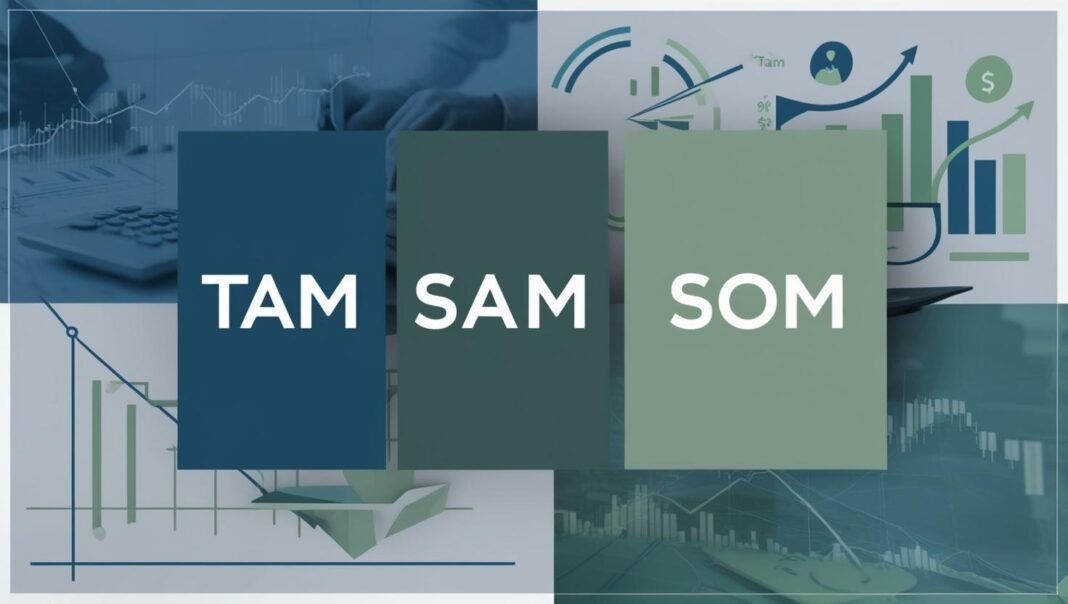We’ve all been there: sitting at our desks with a calculator in hand, crunching numbers to determine if a market is worth pursuing. One of the most valuable frameworks for this task is understanding TAM, SAM, and SOM.
Let’s break it down and see how this can be a game-changer for content strategy and business planning.
What Are TAM, SAM, and SOM?
These three metrics help you quantify market opportunities at different levels, allowing you to focus your efforts where they matter most.
- TAM (Total Addressable Market) TAM represents the total revenue opportunity available if you could capture 100% of the market. It’s the broadest measure of market size and answers the question: How big is the pie? Example: If you’re launching a fitness app, the TAM would include all potential customers globally who could benefit from fitness solutions.
- SAM (Serviceable Addressable Market) SAM narrows the TAM down to the segment you can realistically target, considering your business model, resources, and geographic reach. It answers: How much of the pie can I realistically serve? Using the same fitness app example, the SAM might include English-speaking users in North America who use smartphones.
- SOM (Serviceable Obtainable Market) SOM is your share of the SAM that you can reasonably expect to capture in the short term. This is where market realities like competition, budgets, and marketing effectiveness come into play. It asks: How much of the pie can I eat right now? For the fitness app, the SOM might focus on young professionals in urban areas who are currently using competing apps or seeking fitness solutions.
Why These Metrics Matter for Founders and Marketers
Whether you’re crafting content, planning campaigns, or pitching investors, TAM, SAM, and SOM provide clarity. Here’s why:
- TAM Sets the Vision: Knowing the size of your TAM helps you align on the overall market potential and long-term growth opportunities. It’s particularly useful for securing investor buy-in or inspiring internal teams.
- SAM Defines Your Focus: By narrowing down your TAM to SAM, you avoid wasting resources on audiences you’re unlikely to serve effectively.
- SOM Drives Execution: SOM is where the rubber meets the road. It helps you prioritize your immediate marketing and sales efforts, ensuring you generate quick wins while keeping the bigger picture in mind.
Calculating TAM, SAM, and SOM
- TAM:
- Use industry reports, market research, or data from tools like Statista or IBISWorld.
- Multiply the total number of potential customers by the average revenue per customer (ARPU).
- SAM:
- Segment your TAM by geography, demographics, or other criteria relevant to your product.
- Refine it to match the audience you can realistically serve.
- SOM:
- Evaluate your competitive landscape and consider your company’s capabilities.
- Estimate your potential market share based on similar companies’ performances or your marketing/sales capacity.
Example: Applying TAM, SAM, and SOM to a SaaS Product
Let’s say you’re launching a SaaS product for project management:
- TAM: The total market for project management software globally might be $10 billion.
- SAM: Your SAM, targeting mid-sized businesses in the U.S., might be $1 billion.
- SOM: Your SOM, based on your sales and marketing capacity, might realistically be $10 million in revenue for the first year.
Using TAM, SAM, and SOM in Content Strategy
Understanding these metrics can also shape your content marketing. For example:
- TAM-Oriented Content: Publish thought leadership pieces that resonate with a wide audience to establish your authority.
- SAM-Oriented Content: Create targeted resources like webinars or case studies for your ideal customer profile (ICP).
- SOM-Oriented Content: Focus on high-intent content such as comparison guides, product demos, or testimonials to convert leads.
Final Thoughts
TAM, SAM, and SOM are more than just numbers; they’re a strategic lens for decision-making. By breaking down the market into these layers, you can align your efforts, optimize your resources, and deliver measurable results. Whether you’re writing content or pitching a product, these metrics ensure your strategy is backed by data, not guesswork.
So, the next time you find yourself with a calculator at your desk, remember—you’re not just crunching numbers. You’re unlocking opportunities.



